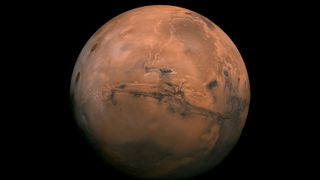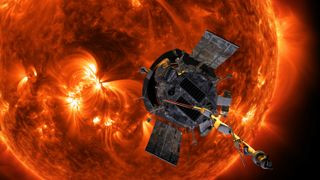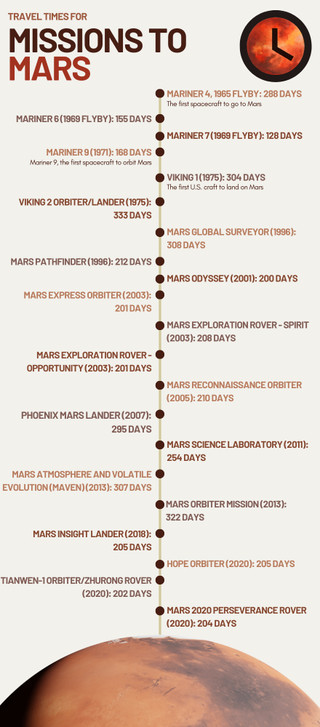Are you dreaming of exploring the Red Planet? Wondering how long it would take to travel to Mars? SIXT.VN understands your curiosity. A journey to Mars is a complex endeavor, influenced by orbital mechanics and propulsion technology. This comprehensive guide explores the factors determining the Mars travel time, offering insights into making this interplanetary dream a reality. Let’s dive into the world of space travel, interplanetary distances, and the science behind Mars missions.
1. What Is the Distance to Mars?
To estimate how long it would take to journey to Mars, it’s crucial to understand the distance between Earth and Mars.
Mars is the fourth planet from the sun. The distance between Earth and Mars is continuously changing as they orbit the sun. According to NASA, the distance varies, but on average, it’s about 140 million miles (225 million kilometers). The closest approach can be around 33.9 million miles (54.6 million kilometers), while the farthest can reach 250 million miles (401 million kilometers).
 Illustration of Earth and Mars orbits, highlighting the varying distances between the two planets
Illustration of Earth and Mars orbits, highlighting the varying distances between the two planets
2. How Long Would It Take to Travel to Mars at the Speed of Light?
If it were possible to travel at the speed of light, how quickly could one reach Mars?
Light travels at approximately 186,282 miles per second (299,792 kilometers per second). Calculating the time it would take light to travel between Earth and Mars:
- Closest Possible Approach: 182 seconds (3.03 minutes)
- Closest Recorded Approach: 187 seconds (3.11 minutes)
- Farthest Approach: 1,342 seconds (22.4 minutes)
- On Average: 751 seconds (12.5 minutes)
3. What Is the Fastest Spacecraft Ever?
Knowing the speed of current spacecraft can provide a realistic estimate of Mars travel time.
NASA’s Parker Solar Probe is the fastest spacecraft, reaching a top speed of 430,000 miles per hour (692,000 kilometers per hour) on December 24, 2024. According to the BBC, this probe keeps breaking its own speed records.
 Illustration of the Parker Solar Probe approaching the sun, demonstrating its incredible speed
Illustration of the Parker Solar Probe approaching the sun, demonstrating its incredible speed
4. How Long Would It Take to Reach Mars on the Parker Solar Probe?
Theoretically, if you could travel on the Parker Solar Probe, how long would the journey take?
Using the Parker Solar Probe’s speed of 430,000 mph (692,000 kph), the travel times would be:
- Closest Possible Approach: 78.84 hours (3.3 days)
- Closest Recorded Approach: 80.93 hours (3.4 days)
- Farthest Approach: 581.4 hours (24.2 days)
- On Average: 325.58 hours (13.6 days)
5. What Factors Affect Travel Time to Mars?
Understanding the various elements influencing travel time can offer a comprehensive view of mission planning.
According to Michael Khan, ESA Senior Mission Analyst, travel time depends on the energy expended, including the effort from the launch vehicle and spacecraft maneuvers.
- Energy Expenditure: Space travel is about managing energy efficiently.
- Orbital Mechanics: Transfers to Mars are interplanetary, influenced by the sun’s position.
- Mars Orbit: Mars has an eccentric orbit and an inclined orbital plane relative to Earth.
- Launch Windows: Opportunities for Mars transfers arise roughly every 25-26 months.
- Transfer Types: Faster transfers take 5-8 months, while slower ones take 7-11 months.
6. How Do Orbit and Landing Intentions Affect Travel Time?
The mission’s objective, whether to orbit or land, significantly impacts travel time due to added constraints.
Entering Mars orbit or landing requires additional considerations. An orbiter needs propellant for orbit insertion, while a lander requires a heat shield to withstand atmospheric entry. These factors limit the arrival velocity and lead to longer travel times.
7. What Are the Problems with Calculating Mars Travel Times?
Straight-line measurements don’t account for orbital mechanics and planetary movement.
The calculations often assume a straight-line distance, which doesn’t account for orbital paths. Planets move at different rates, so engineers must calculate arrival points, not departure points. Spacecraft also need to decelerate to orbit the target planet.
8. How Long Did Previous Mars Missions Take?
Examining historical missions provides insight into realistic travel times.
Ideal launch alignments result in approximately nine-month journeys to Mars, as noted by NASA Goddard Space Flight Center’s website.
- Orbital Alignment: Earth takes one year to orbit the sun, while Mars takes about 1.9 years.
- Elliptical Orbit: The transfer orbit from Earth to Mars averages the lengths of Earth’s and Mars’ orbits, taking about 1.5 years.
- Mars Movement: In nine months, Mars moves considerably, necessitating precise planning.
- Launch Windows: Ideal alignments occur every 26 months.
 Timeline of various missions to Mars, showing the duration of each journey
Timeline of various missions to Mars, showing the duration of each journey
9. What Technologies Could Shorten Mars Travel Time?
Technological advancements are key to reducing travel time to Mars.
NASA’s Space Launch System (SLS) aims to carry humans to Mars. Emerging technologies like photon propulsion, using powerful lasers, could propel spacecraft at near-light speeds. According to Philip Lubin from the University of California, Santa Barbara, Directed Energy Propulsion for Interstellar Exploration (DEEP-IN) could send a robotic spacecraft to Mars in just three days.
10. What Are the Human Health Risks of Mars Travel?
Understanding the health challenges is critical for planning human missions.
A research paper in Nature highlights the health risks associated with long-duration space travel. These include radiation exposure, psychological stress, and physiological changes due to prolonged weightlessness.
Additional Resources
- NASA’s Moon to Mars Overview: Learn about NASA’s lunar exploration plans.
- The Conversation: Read about safely transporting people from Earth to Mars.
- Nature Research Paper: Explore the human health risks of a Mars mission.
Navigating the complexities of space travel can be daunting, but with SIXT.VN, planning your terrestrial adventures is a breeze. Whether you need airport transfers, hotel bookings, or tours around Hanoi, SIXT.VN ensures a smooth and enjoyable experience. Contact us today to plan your next journey!
Address: 260 Cau Giay, Hanoi, Vietnam
Hotline/Whatsapp: +84 986 244 358
Website: SIXT.VN
FAQ About Traveling to Mars
1. How long does it realistically take to get to Mars with current technology?
With current technology, a one-way trip to Mars typically takes around nine months. This duration can vary depending on the specific trajectory and propulsion systems used.
2. What is the main factor that determines the duration of a Mars mission?
The primary factor determining the duration of a Mars mission is the alignment of Earth and Mars, which dictates launch windows that occur approximately every 26 months.
3. Could future technologies significantly reduce the travel time to Mars?
Yes, future technologies like photon propulsion and advanced rocket systems such as NASA’s Space Launch System (SLS) could drastically reduce travel times to Mars, potentially to just a few days.
4. What are the main challenges in planning a mission to Mars?
The main challenges include the vast distance, the need for precise orbital calculations, managing energy expenditure, and mitigating the health risks associated with long-duration space travel.
5. How does the mission’s objective (orbit vs. landing) affect travel time?
If the mission’s objective is to orbit or land on Mars, additional constraints are added, such as the need for propellant for orbit insertion or a heat shield for atmospheric entry, which typically increases the travel time.
6. What is a “pork chop plot” in the context of Mars missions?
A “pork chop plot” is a diagram used by trajectory experts to identify the required dates of departure and arrival and the amount of energy needed for a Mars transfer, considering the positions of Earth and Mars.
7. How often do launch windows for Mars missions occur?
Launch windows for Mars missions occur approximately every 26 months, aligning with the synodic period of Earth and Mars as they orbit the sun.
8. What is the fastest speed ever achieved by a spacecraft, and how does it relate to Mars travel?
The fastest speed was achieved by NASA’s Parker Solar Probe, reaching 430,000 miles per hour (692,000 kilometers per hour). While this speed is impressive, it’s not directly applicable to Mars travel due to trajectory requirements and the need for deceleration upon arrival.
9. What are the primary health risks astronauts face during a Mars mission?
The primary health risks include radiation exposure, psychological stress, and physiological changes due to prolonged weightlessness.
10. How has our understanding of Mars travel evolved over time?
Our understanding has evolved significantly with advancements in propulsion systems, orbital mechanics, and materials science, allowing for more accurate calculations and potential reductions in travel time.



